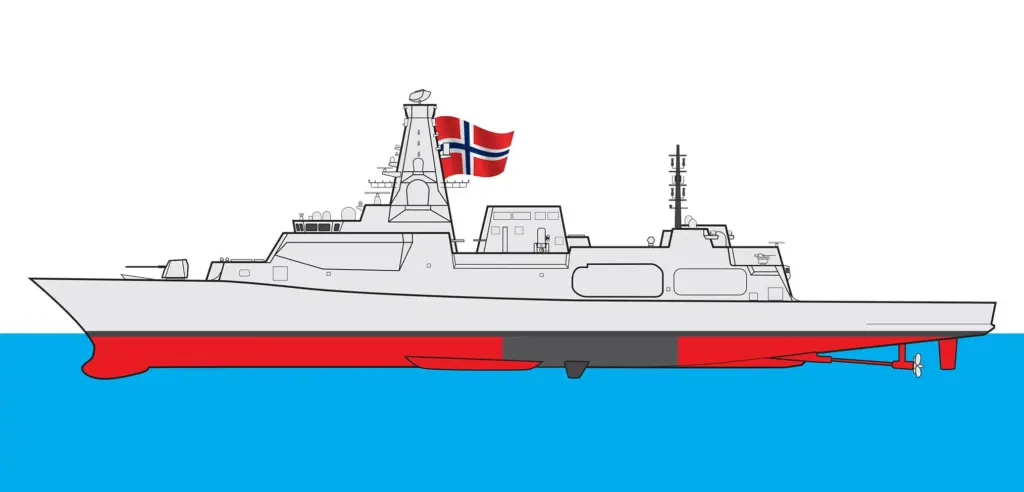
Norway has formally announced its decision to purchase at least five Type 26 frigates, marking a significant export success for the United Kingdom. This development, unveiled today, sets the stage for a strategic partnership between the two nations, with a binding agreement expected soon. The agreement will outline the framework for collaboration, followed by detailed contract negotiations with BAE Systems regarding the delivery schedule.
The Royal Navy and the UK government have been instrumental in securing this deal, engaging in extensive diplomatic efforts, including ministerial visits and naval cooperation with Norway. This partnership underscores the deepening defense ties between the two countries.
Strategic Fit for Norway’s Naval Needs
The Royal Norwegian Navy, or Sjøforsvaret, is seeking to replace its aging Fridtjof Nansen-class frigates, with a primary focus on anti-submarine warfare (ASW). Norway’s decision to invest in the high-end Type 26 frigates reflects its strategic priorities, emphasizing effectiveness and suitability over cost. The Type 26 emerged as the preferred choice over the French Frégate de Défense et d’Intervention (FDI), which, while cheaper, offers a more general-purpose platform.
Norway’s substantial defense budget is supported by its sovereign wealth fund, fueled by hydrocarbon revenues. This financial backing allows for increased defense spending in response to regional security challenges. The collaboration with the UK and Canada, both operators of the Type 26, will enhance shared support, training, and interoperability opportunities. The North Atlantic and High North regions, crucial for ASW operations, will benefit significantly from this trilateral cooperation.
Economic and Industrial Impact
This deal represents a major economic triumph for the UK, marking the largest British warship export project since World War II. The Type 26 frigate program involves an extensive industrial supply chain, encompassing approximately 400 companies across the UK. Valued at around £10 billion, this export includes not only the initial construction but also through-life support for the ships.
With more than 30 ships in the class, the Type 26 has become the most successful British frigate design since the Leander class.
All Norwegian frigates will be constructed on the Clyde, maintaining close alignment with the original Type 26 design. This contrasts with the Canadian and Australian variants, which feature only about 70% commonality. Norway’s Ministry of Defense plans to equip the frigates with anti-submarine capable helicopters, following the cancellation of its NH-90 contract due to performance issues. A decision on a replacement helicopter is forthcoming.
Production Challenges and Strategic Gains
The decision to integrate the Norwegian frigates into the Royal Navy’s production schedule presents logistical challenges. Norway requires delivery of its first ship by 2029, necessitating the allocation of at least one ship currently under construction for the RN. This may impact the RN’s delivery timeline, particularly for ships like HMS Belfast or HMS Birmingham.
BAE Systems is advancing into the main production phase for the Type 26 program, with plans to deliver one vessel per year from ship five onwards. Despite significant investments to enhance facilities at Govan, the fitting-out phase in Scotstoun remains a bottleneck due to the specialized skills required for integrating complex systems.
The RN desperately needs new frigates, and any delay in replacing the Type 23s will be controversial. However, the strategic and economic benefits of the Norwegian deal outweigh the short-term challenges.
The collaboration with Norway enhances regional security, as the Type 26 frigates will perform similar ASW tasks as they would in RN service, focusing on countering Russian submarine threats in the High North. It is crucial that the UK government ensures the RN’s Type 26 numbers are maintained, avoiding any reduction that could undermine the program’s strategic value.
As the UK and Norway finalize their agreement, this landmark deal not only strengthens defense ties but also positions the Type 26 frigate as a formidable player in the global naval market, potentially attracting further export interest.







